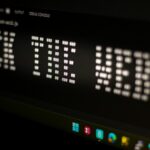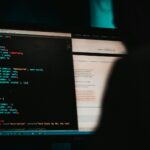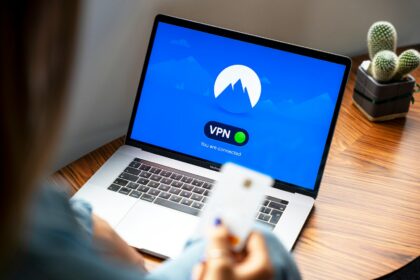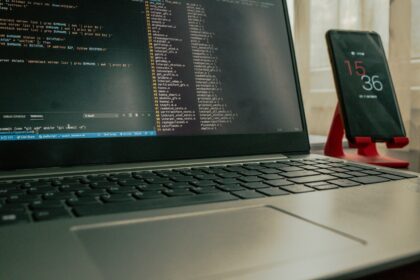Welcome! Youve picked a question lots of newcomers ask, so dont feel alone. When people look ahead in tech, they often spot two giants hovering over the landscape: Cybersecurity, which guards systems, and Artificial Intelligence, which teaches machines to think. Both fields paint a bright career picture, with solid pay and chances to solve real-world challenges. Yet the fresh graduate or self-taught learner always wonders: Which path is quicker to step onto and stay on?
That question lies at the heart of our talk today. Were digging into who has the easier climb-Cybersecurity or AI-and, trust me, the answer wont land neatly on one side or the other. Easy is a slippery word. What flows naturally for one person might trip up another. Your past studies, the hobbies you love, even the way you like to solve puzzles all shape the answer.
Think about the choice between training to be a master chef or a master architect. Both paths demand hard work, creativity, plus plenty of patience. The chef learns to read flavours, knows how each ingredient behaves, and stays calm when the kitchen gets noisy. The architect studies weight and balance, sketches countless ideas, and checks every line to spot tiny errors. So which job is easier? That mostly depends on whether you enjoy shaping dishes or shaping buildings.
In this article we wont pretend to hand you a one-size answer. Instead well take both careers apart, piece by piece. Well talk about how long it takes to learn, what a typical day looks like, key skills, and the attitude you need to keep going. By the time you finish reading youll have a cleaner picture of which route might feel easier for you. Lets lace up our shoes and get moving.
Part 1: The Digital Guardian – Understanding Cybersecurity
What exactly is cybersecurity? At its core, cybersecurity is the practice of keeping our digital lives safe. It aims to shield computers, phones, tablets, networks, and the information stored on them from theft, damage, or prying eyes. Picture a cybersecurity expert as the watchful keeper of a digital fortress. This virtual stronghold contains priceless data, and outside, crafty attackers-hackers, fraudsters, even bored teens-always look for a way in.
The keeper builds sturdy walls (firewalls), sets up bait-filled traps (honeypots), pours over endless camera feeds (security logs), and trains for the moment an intruder slips through (incident response). Because new threats appear every day, the job never really ends.
The Core Mindset of a Cybersecurity Pro
To get far in cybersecurity, you need to work from a very special headspace. People often call it a paranoid or adversarial mentality. Odd as those labels sound, they dont really mean you walk around terrified. Instead, they train you to step inside an attackers shoes. When you open a new app, you stop admiring its glossy buttons and ask, How could I crack this? How could a stranger twist that neat feature to snatch data?
Skepticism is your constant companion. You question everything, even systems that look bulletproof. One of the fields old mantras says Trust, but verify. So you might accept a design as mostly safe, yet youll always run your own tests to prove it. In many ways, you play three jobs at once: detective hunting for clues, soldier shielding users from live threats, and builder weaving tougher defenses for tomorrow.
A Day in the Life: Anna, the Security Analyst
Meet Anna; she spends her work hours as a Security Operations Center analyst. Instead of easing into the morning with a quiet cup of coffee, she faces a rush of on-screen alerts. Those alerts come from automated sensors that flag anything odd on her company’s network. One headline catches her eye: a marketing staffer just logged in from a faraway country at 3 a.m. Is it a mistake or a genuine breach?
Her pulse quickens, a small surge that hits whenever the unknown lands on her desk. That, she admits, is the everyday weight of the job; quick decisions can keep the business safe. First stop is the travel calendar: the employee is not out of town. Next she pulls up recent actions: moments earlier he downloaded an unusual attachment from an email. It carries the telltale marks of phish bait. His password has been grabbed, and an intruder now sits inside the network.
The moment Anna spots a suspicious log-in, she jumps into action the way her training taught her. First, she locks the employees account so the attacker cant slip any further through that doorway. Then she shoots her team leader a quick message. Within minutes the two of them, followed by the rest of the security crew, raid every corner of the network in a full-scale incident response. Her task for the rest of the afternoon, maybe even long after the office lights have dimmed, is to trace the intruders steps, check what files they poked at, and scrub every trace of them. Its tense, on-the-fly work, phone ringing and alerts flashing, but when the last firewall rule is set and the threat blinks out for good, Anna leans back and smiles. Another night, another castle saved.
Getting Started in Cybersecurity
So, how hard is it to break into a field that sounds this serious? Honestly, easier than stepping into the worlds spotlight around artificial intelligence. You can launch your career without a four-year computer-science diploma, though having one definitely makes reading code a little less scary. Most newcomers begin by munching on industry badges instead-certifications like CompTIA Security+ that show you understand the basics. Study the materials, sit the test, and poof-you earn a credential that gets your resume noticed. With that under your belt, a junior gig much like Annas opens up, where the real learning happens day by day all while defending the networks that keep businesses running.
The first upside of diving into cybersecurity is how quickly you can roll up your sleeves and start working with real tools. Books and videos can walk you through basic networks, the guts of popular operating systems, and well-documented attack techniques like phishing or SQL injection. On the flip side, every week, sometimes every day, new malware, fresh exploits, and novel scams pop up, so that pile of must-know facts never stops growing, no matter how late you stay up studying. You really are signing up for a lifetime of curious learning.
Part 2: The Digital Brain Builder – Understanding Artificial Intelligence
Now, let s switch gears and talk about artificial intelligence because if cybersecurity is mainly about shielding machines, AI is about giving them a kind of synthetic imagination. At heart, AI means engineering programs that do things we usually think only people can do, such as spotting patterns, playing chess, chatting with you in normal speech, or even guessing what kind of food you want from a photo. Think of an AI developer as the coach of a digital brain: rather than writing line after line of precise code that spells out every move, you feed the system examples-lots of them- so it learns the underlying rules on its own and slowly figures out how to think in a basic sense.
The kind of artificial intelligence people see working around them every day is called machine learning, or ML for short. This area has already become the engine powering countless useful tools. You start by feeding a program tons of examples-data, and over time it picks out unseen patterns basically on its own. Show it millions of cat photos, and after enough practice it gets the hang of spotting a cat in a fresh image. That behind-the-scenes learning is what lets your phones photo app tag TeeTee or Muffin when you swipe through pictures.
The Core Mindset of an AI Pro
Jump into AI and you quickly discover that its heart beats with curiosity, not the low hum of fear that colors much of security work. An AI pro spends more evenings chasing wild experiments than locking down networks, trying to answer odd questions like, Can a computer learn to spot customers about to bounce from their subscription? That blend of science and art is what sets the job apart.
Getting anywhere with a question like that means caring deeply about data. Think of it as the breakfast, lunch, and dinner for your digital brain; if the meal is spoiled, your model won t grow strong. Much of your day will vanish into cleaning, labeling, and just sitting with the numbers until they finally start talking. You also need to speak math-the sort that prowls in statistical charts, probability trees, and the crisp shapes of linear algebra-because that s the real grammar AI understands. Above all, patience matters more than speed. You build, you break, you fix, and you do it all again because every failed run teaches something the last one missed.
A Day in the Life: Mark, the Machine Learning Engineer
Meet Mark, a machine-learning engineer at a busy e-commerce company. His latest little mission is to make the Recommended-for-You section of the site feel smarter, so shoppers see things they really want instead of just pages of shoes.
His day kicks off with data. Most of the morning vanishes while he writes code that drags in user clicks, old orders, and product details, mashing it all into a single, lumbering dataset. Then comes the cleanup. Hes smoothing out typos, patching missing bits, and shuffling columns until everything sits neat and tidy. Its not glamorous. Mark jokes that being a data janitor is half his job, but without this scrubbing, the fancy models he dreams up would be useless.
Once the afternoons sun is high, he slides into model-building. He picks an algorithm he trusts, taps out the training code, and hits run. Now the machine crunches numbers for hours-even the best gaming rig crawls at this point. While he waits, Mark wanders a new research paper or two because the field moves at breakneck speed and falling behind is a very real risk.
Finally, the model is running. He runs some tests, and the numbers come back . . . okay. A notch above the old setup, true, yet still far from mind-blowing. Hes not discouraged; this drop in wow factor is normal. The real detective work starts when initial scores land anywhere near good enough. Could the training data have missed key examples? Did his choice of algorithm short-circuit the learning? He pencils in quiet afternoons to swap in fresh features, fine-tune hyper-parameters, and chase that elusive jump he is proud to share with colleagues. His workflow is proactive and project-based. He is building something new, not just patching the aging security dashboard.
Getting Started in AI
So, is it easy to get started in AI? The short answer is that entry costs climb as the field deepens. Compared with cybersecurity, the hardware, datasets, and tuning time can feel daunting. Coursera or Youtube still cover the basics, yet most hiring managers now expect a rock-solid grip on Python and the math lurking behind linear algebra, calculus, and probability. For higher-tier roles, especially research gigs, a Masters hangs around the neck like a small stone, while top labs still reserve many seats for folks with freshly minted PhDs. Passion and grit get beginners in the door, but lasting success often pairs that zeal with disciplined study.
The easy part for anyone curious about Artificial Intelligence is how accessible the tools have become. Download Python in a minute and grab free libraries like TensorFlow or PyTorch and you are ready to go. From that point, building a little model on your laptop takes almost no effort. The tough part sits beneath the surface: the deep theory that explains why your model sometimes nails the task and other times flops. Its one thing to run someone elses code; its another to fix a broken train wreck or to design a shiny new train from scratch.
Part 3: The Head-to-Head Comparison
Having learned about each field in its own bubble, we can finally dose them up side-by-side and tackle the big question that started this whole thing: Which career feels easier, Cybersecurity or Artificial Intelligence? In the next few pages we will line them up across a bunch of practical criteria so you can see how the strengths and headaches of each discipline stack or clash.
Criterion 1: The Learning Curve & Foundational Skills
At its core, this section stays pretty simple. Its really about the bare minimum you have to learn just to open the door and call yourself a beginner in either trade.
| Factor | Cybersecurity | Artificial Intelligence |
|---|---|---|
| Core Knowledge | Tcp Ip building blocks, how Windows and Linux tick, and solid grounding in the Cia security pillars. | Mathematics linear algebra, calculus, and some stats, plus coding usually in python and friendly algorithms. |
| Entry Path | Certification heavy route (think Comptia, Giac) because a degree helps but isnt always a must for junior gigs. | Often degree push (computer science, data science, the works) where a basic bachelors counts and masters or phd-laden ranks pop up in cool white papers. |
| Initial “Feeling” | Cyber start-up is like picking up a big toolbox: you open the lid and a mess of wires, gauges, and manuals spills out. Yet, the tools are so concrete-setup a firewall, tweak a router, watch for weird logins-that you feel progress from the first task. | With AI, the opposite is true: the first weeks are mostly staring at math textbooks, brushing up on calculus and linear algebra, before any cool model even loads. |
Verdict on “Easy”: Cyber usually wins the “who s easier to start” contest because you can pick a narrow skill-network monitoring, say-study for a few months, grab a cert, and slide into a junior job. AI paths still lead to jobs, but they tend to wind longer through grad school, research papers, or hefty study guides on neural nets.
Criterion 2: The Daily Grind & Work Environment
What is the day-to-day job actually like?
Ask Anna who defuses potential breaches at a bank and she ll tell you her day is one long round of alerts, patches, and the occasional phone call at two a.m. Security work swings fast: one minute you re securing Wi-Fi guest keys, the next a zero-day exploit drops and the whole plan changes. For Mark, who trains chatbots for a software firm, the rhythm is calmer but chunkier. He codes for one sprint, reviews results with product managers the next, then spends weeks fine-tuning data instead of scrambling to put out fires.
AI work is usually proactive and organized around projects. You set a big goal, then tackle pieces one step at a time. The biggest pressure comes from meeting milestones and chasing new insights, not from an urgent fire to put out. Its rhythm resembles that of a research scientist or an inventor, with long valleys of slow progress suddenly broken by an ah-ha moment.
“In security, you have to be right all the time. The attacker only has to be right once.” That saying hangs over every blue-team meeting.
So is either path “easy”? It really boils down to your personality. If you live for fast puzzles and on-the-spot fixes, the urgency of security can feel fun instead of frantic. If you love deep reading, long arcs of code, and a steadier (though still tough) timetable, day-to-day AI work might seem smoother.
Criterion 3: Keeping Up with Change.
Both worlds change at lightning speed, yet the source of that change is not the same.
In cybersecurity the change is driven by an active enemy. Every few hours someone somewhere tests a new exploit or tweaks a malware kit. It is a cat-and-mouse game where you cannot blink. You have to study attack tools, zero-day patches, and emerging threat clouds. Miss a trend, and all the planning in the world will not stop the next breach.
Big advances in AI come from fresh research and bold tests of new ideas. Practitioners constantly dig into papers about new algorithms, novel model designs, and the tiny tricks that nudge performance upward. Progress can suddenly leap forward, and without that curiosity, the tools you built yesterday risk becoming yesterday’s news. Stay alert, or others will outpace you with faster, leaner systems.
So is either path “easy”? Not after the first few tutorials. Both demand years of reading, tinkering, and re-learning as tech moves. The only real difference is orientation: do you prefer mastering shiny new tools, or sharpening defenses against a persistent adversary? In security, emergencies burst in daily, making the pressure feel louder and harder to ignore.
Part 4: The Human Factor – Which Personality Fits?
Put tech aside for a moment. What kind of person sits behind the keyboard? Personality may matter more than skill in deciding which path feels easier in practice. Its simply simpler to master a field that speaks to your natural instincts and thought patterns.
Choose cyber if you:
- spot typos that most people miss,
- follow checklists without losing interest,
- feel uneasy when a friends data is at risk,
- breathe slowly when an alert flashes red,
- or wonder how websites get hacked and test those theories repeatedly.
- You might feel like a guardian or a calm detective when working with these programs.
You Might Like A Job In A-I If-
- You wake up wondering, What if this robot could think?
- Numbers, patterns, and formulas make you smile, not frown.
- You tinker for hours, shrugging off fails because learning matters more.
- When people say build, you say Awesome-let me sketch, code, and test!
- You lean toward creator, researcher, or curious scientist.
Honest answers to these questions may guide you better than pay charts. The road that feels easy usually echoes your own style the loudest.
Part 5: The Final Verdict – So, Which is Easier: Cybersecurity or Artificial Intelligence?
After wandering through the lives of digital defenders and machine- learning whizzes, its time to compare the two careers head-to-head. We know how each person spends a workday, what tools sit beside them, and what attitude gets them hired. So now we can ask, once and for all, which one anyone can pick up without losing their mind: cybersecurity or artificial intelligence?
The clean answer is not a happy one-Easy is a dirty word here. A kinder word would be accessible, or maybe simply more straightforward.
Cybersecurity usually wins the accessibility prize. From the moment you order a beginner book or sign up for a weekend coding class, a clear route opens up. Study hard, earn a few well-known certificates, and that first entry-level desk job-customer support, incident responder, or junior analyst-is within reach in months. The theories can get deep, yet the everyday problems-locking laptops, patching servers, or spotting phishing emails-are concrete and often visual.
Artificial intelligence, by contrast, throws up a taller gate. Before you even peek at neural networks or chatbots, you need solid math, clean coding skills, and a grasp of data structures that underpins every algorithm. Because of all that background reading, the journey drags on; many hopefuls still spend years in school or on their own before publishing the first playable proof-of-concept. On the upside, if math makes you grin rather than groan, turn- ing formulas into working models may soon feel more natural than sifting through a daily wave of new hacks.
In the end, picking between tech and cyber has nothing to do with choosing the road of least resistance. Both paths are tough, each throws a new curveball almost daily, and anyone who wants to stay sharp has to keep soaking up new information. Deciding on a coding job simply because you heard it was “easier” usually ends in early burnout and regret. A far better question to wrestle with is not Which side comes with fewer headaches? but Which side sparks real curiosity in me?
So, before you picture the daily grind, think about the problems you want to tackle every morning for the next decade. Would you get a kick out of shielding the online world we already know, figuring out where new threats lurk and using smart tools to block them? Or do you daydream more about wiring together sensors, data, and algorithms so machines learn and adapt, maybe even steering entire cities? Follow that spark, not the rumor that one job is a cushy seat; only true interest makes long hours feel like play.
























